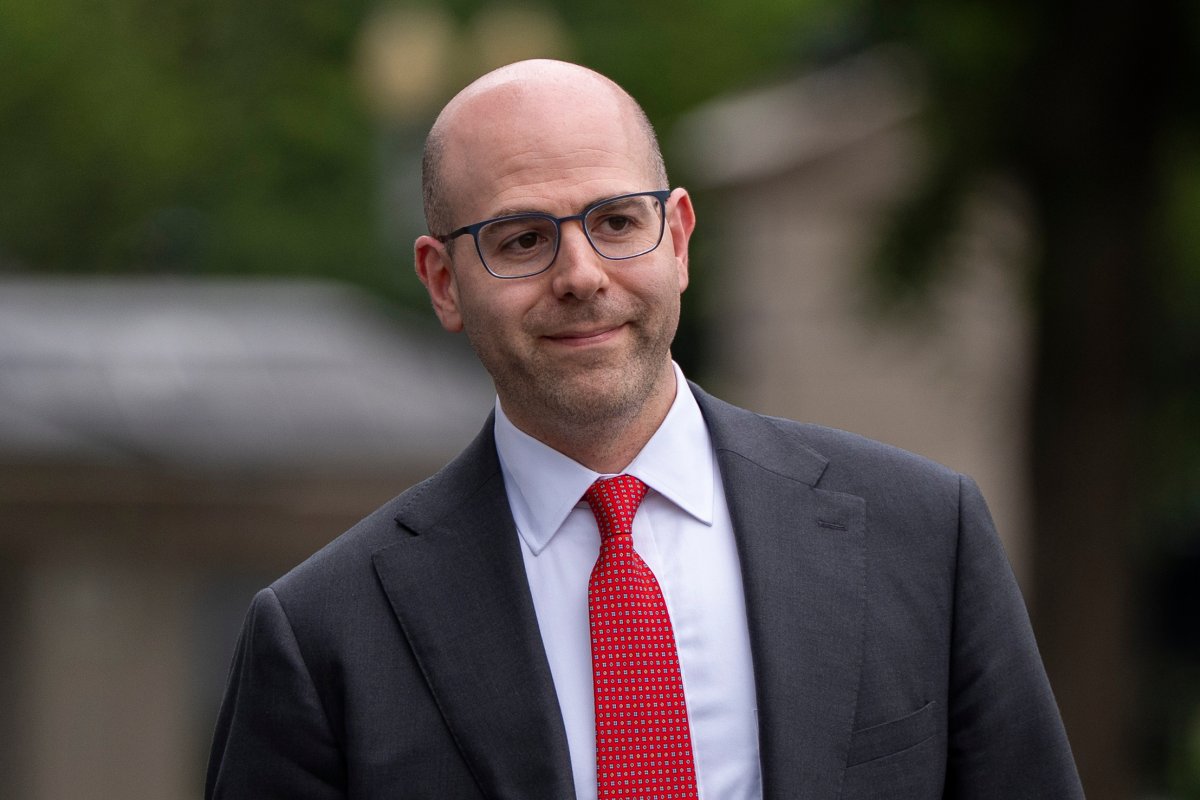President Donald Trump on Thursday announced his intent to nominate Stephen Miran, chairman of the White House’s Council of Economic Advisers, to the Federal Reserve Board of Governors.
Miran would temporarily fill the seat left vacant by Biden appointee Adriana Kugler, who is stepping down Friday. If confirmed by the Senate, Miran would serve until January 31, 2026. Miran’s nomination is likely to raise concerns over political influence at the Fed, an institution long prized for its independence.
The appointment marks Trump’s first opportunity in his second term to exert more direct control over the Federal Reserve—an institution he has repeatedly criticized. Trump last week lashed out at Fed Chair Jerome Powell on social media, calling him “a stubborn MORON” for not cutting interest rates amid his sweeping new tariffs.

Associated Press
What to Know About Stephan Miran, Trump’s Pick for Federal Reserve Board of Governors
Last November, Miran proposed measures aimed at devaluing the U.S. dollar to boost exports, curb imports, and narrow the trade deficit—a central goal of Trump’s economic agenda. Miran also suggested that implementing tariffs could pressure key trade partners, including the European Union and Japan, into accepting a weaker dollar through what he dubbed a “Mar-a-Lago Accord,” referencing the 1985 Plaza Accord that successfully depreciated the dollar’s value.
In March 2024, while serving as a fellow at the conservative Manhattan Institute, Miran also advocated for significant changes to the governance of the Federal Reserve. His proposals included making it easier for the president to remove members of the Fed’s board of governors—an idea that could sharply erode the institution’s traditional independence from political influence.
Adriana Kugler, the departing governor and a Biden appointee, supported Powell’s position that interest rates should remain steady while the Fed assesses the inflationary effects of Trump’s tariffs. The Fed held rates steady at 4.3% during its meeting last week, though two Trump-appointed governors—Christopher Waller and Michelle Bowman—dissented.
“The Fed’s current governance has facilitated groupthink that has led to significant monetary-policy errors,” Miran wrote in a policy paper co-authored with Dan Katz, who now holds a senior position at the Treasury Department.
Even with Miran’s appointment, many of the Fed’s 12 voting officials remain wary of inflationary pressure from Trump’s policies. After the July jobs report, Miran criticized Powell again, asserting that Trump had been proven right on inflation in his first term and would be again.
“What we’re seeing now in real time is a repetition once again of this pattern where the president will end up having been proven right,” Miran said on MSNBC. “And the Fed will, with a lag and probably quite too late, eventually catch up to the president’s view.”
Miran earned his Ph.D. in economics from Harvard University in 2010. Prior to joining the Trump administration, Miran was a senior strategist at Hudson Bay Capital Management, co-founded Amberwave Partners, and served as an adjunct fellow at the Manhattan Institute. He previously held a senior economic policy advisory role at the U.S. Treasury in the first Trump administration.
When was the federal reserve created?
The Federal Reserve, commonly known as the Fed, was established in 1913 with the passage of the Federal Reserve Act, signed into law by President Woodrow Wilson. Its creation followed a series of financial panics, particularly the Panic of 1907, which exposed the need for a central banking system that could stabilize the U.S. economy. The Fed was designed to provide the country with a safer, more flexible, and more stable monetary and financial system. Over the years, its role has evolved significantly, especially after major events like the Great Depression and the 2008 financial crisis.
The Fed’s independence is considered critical to its ability to make politically difficult decisions, such as raising interest rates to control inflation. All Fed governors vote on key monetary policy decisions, including rate-setting and financial regulation. With Miran on the board, Trump would likely gain a reliable vote in favor of rate cuts.
Update: 8/7/25, 6:43 p.m. ET: This article was updated with new information and remarks.


